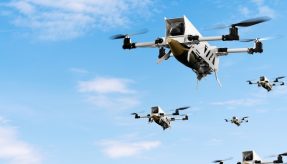
The EDA held the first energy management course which featured 17 students from member states learning how to improve energy efficiency.
The course taught energy management in defence and was attended by representatives from navies, armies, and air forces. The Defence Energy Manager’s Course (DEMC) aims to teach EDA (European Defence Agency) leaders how to reduce energy use.
The 17 attendees represented armed forces and ministries in Estonia, France, Belgium, Ireland, Greece, Britain, Sweden, and Italy. The course taught both practical and theoretical training based on the ISO 50001 standard.
The course was split into five distinct modules: three classroom-type sessions and two more practical modules which, in total, lasted some 11 months. Participants increased their knowledge of the complexities of managing energy within a defence organisation (energy management systems were applied to different military installations, from air and naval bases to governmental facilities) and learned how to structure and implement efficient energy management systems.
Throughout the course, students were supported by mentors and members of the European Defence Energy Network (EDEN) which also allowed them to have permanent access to the networks’ online resources. Two additional courses are currently underway; they will be completed by May 2020.
The successful completion of the first DEMC marks an important milestone in EDA’s efforts aimed to increase energy sustainability in defence sector and reduce the military’s environmental footprint, also building on the work done in the Consultation Forum for Sustainable Energy in the Defence and Security Sector (CFSEDSS) sponsored by the European Commission and the Agency’s own Energy and Environmental Working Group. The whole DEMC project is run by EDA’s Industry, Synergies & Enablers Directorate (ISE) and delivered by GEN Europe and the Centre for Renewable Energy Sources & Savings (CRES).
If you would like to join our community and read more articles like this then please click here.








